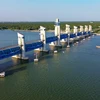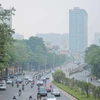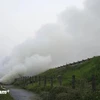Vietnam has been advised to call for capital from different investment sources to develop waste water treatment projects, or the State will have to pay 780 million USD a year, equal to 1.3 percent of the GDP, to cover the economic losses caused by the poor hygiene. Report by the English news website VietNamNet Bridge.
Huge capital spent, but still not enough
A report showed that 150 million USD has been spent every year, or 0.45 percent of GDP, in the last decade to upgrade the urban sanitation. It was estimated that 2.1 billion USD was spent in the 1995-2009 period on water drainage and waste treatment alone.
However, Vietnam still needs more money for the urban sanitation upgrading. About 8.3 billion USD would be needed to provide water drainage services to 36 million urbanites by 2025. The figures have been announced by the World Bank in a report released in mid January 2014.
According to the Ministry of Construction, there are some 50 concentrated waste water treatment stations nationwide, but only 24 are operational with a total capacity of 670,000 cubic meters per day, while t he other 26 with a combined capacity of 1.435 million cubic meters are still under construction.
With such a poor infrastructure system, most of the waste water has been discharged directly to the surface water drainage system. Only 10 percent of the waste water can be treated.
The modest improvement in the waste water treatment explained why it was a hot topic for discussion at the 2013 Development Partner Forum. Specialists, partners and donors all have advised Vietnam to build a reasonable mechanism and call for the investment from the private economic sector for water service and environment sanitation projects.
What does it mean by “reasonable mechanism”?
The capital for the urban sanitation projects, especially the waste water treatment projects in big and medium cities, has been increasing. However, the majority of the capital was sourced from the official development assistance (ODA), and only a few projects have been developed by private investors so far.
Most of the businesses in charge of the water drainage and waste water treatment have been running the systems as “ordered” by the local authorities, which pay for the services.
Analysts have commented that the current mechanism, under which fixed budgets are allocated every year to businesses to operate the systems, does not allow the businesses to make investment for development.
The World Bank’s experts have pointed out that Vietnam still does not have reasonable preferential policies to mobilise resources from the private economic sector to the work.
The unreasonable service fee framework set up by the State and the improper legal framework both have also been cited as the main reasons behind the problem.
In principle, in order to attract the private investment to the field, the State needs to promise the profits high enough to attract investors.
What the State should do immediately is to create most favourable conditions for businesses to access official credit channels, and to allow businesses to raise the service fee in order to ensure the income high enough for machine maintenance and businesses’ re-investment.-VNA
Huge capital spent, but still not enough
A report showed that 150 million USD has been spent every year, or 0.45 percent of GDP, in the last decade to upgrade the urban sanitation. It was estimated that 2.1 billion USD was spent in the 1995-2009 period on water drainage and waste treatment alone.
However, Vietnam still needs more money for the urban sanitation upgrading. About 8.3 billion USD would be needed to provide water drainage services to 36 million urbanites by 2025. The figures have been announced by the World Bank in a report released in mid January 2014.
According to the Ministry of Construction, there are some 50 concentrated waste water treatment stations nationwide, but only 24 are operational with a total capacity of 670,000 cubic meters per day, while t he other 26 with a combined capacity of 1.435 million cubic meters are still under construction.
With such a poor infrastructure system, most of the waste water has been discharged directly to the surface water drainage system. Only 10 percent of the waste water can be treated.
The modest improvement in the waste water treatment explained why it was a hot topic for discussion at the 2013 Development Partner Forum. Specialists, partners and donors all have advised Vietnam to build a reasonable mechanism and call for the investment from the private economic sector for water service and environment sanitation projects.
What does it mean by “reasonable mechanism”?
The capital for the urban sanitation projects, especially the waste water treatment projects in big and medium cities, has been increasing. However, the majority of the capital was sourced from the official development assistance (ODA), and only a few projects have been developed by private investors so far.
Most of the businesses in charge of the water drainage and waste water treatment have been running the systems as “ordered” by the local authorities, which pay for the services.
Analysts have commented that the current mechanism, under which fixed budgets are allocated every year to businesses to operate the systems, does not allow the businesses to make investment for development.
The World Bank’s experts have pointed out that Vietnam still does not have reasonable preferential policies to mobilise resources from the private economic sector to the work.
The unreasonable service fee framework set up by the State and the improper legal framework both have also been cited as the main reasons behind the problem.
In principle, in order to attract the private investment to the field, the State needs to promise the profits high enough to attract investors.
What the State should do immediately is to create most favourable conditions for businesses to access official credit channels, and to allow businesses to raise the service fee in order to ensure the income high enough for machine maintenance and businesses’ re-investment.-VNA



















